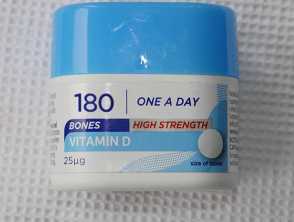What is vitamin D?
Vitamin D is made up of a group of fat-soluble vitamins that exist in several forms.
The functions of vitamin D include immune protection and regulation of mineral and skeletal homeostasis.
The skin is of unique importance in the synthesis, storage, and release of vitamin D into circulation.
Types of vitamin D
There are several forms of vitamin D:
Vitamin D2
- Also known as ergocalciferol or calciferol
- Made from inactive provitamin ergosterol in plants by the action of sunlight (UV radiation).
Vitamin D3
- Also known as cholecalciferol or colecalciferol
- Present in small amounts in some foods such as oily fish (salmon, sardines and mackerel), eggs, meat (particularly liver) and foods fortified with vitamin D
- Made in the skin by the action of sunlight (mostly UVB) on a cholesterol-derived compound (7-dehydrocholesterol).
1,25 dihydroxycholecalciferol
- Also known as calcitriol
- Biologically active hormonal form of vitamin D
- Used by the body to form and maintain healthy strong bones.
- Converted from cholecalciferol (vitamin D3) in the liver and kidneys.
The relationship between vitamin D and sun exposure
Sunshine is a significant source of vitamin D, as ultraviolet B (UVB) rays from sunlight trigger vitamin D3 manufacture in the skin.
Balancing time of sunlight exposure to maintain adequate vitamin D levels, while avoiding an increased risk of sun damage and skin cancer is often discussed.
Exposure to a small amount of UV results in production of vitamin D without sunburn. Exposure to a higher amount does not result in higher amounts of vitamin D — instead, inactive luminsterol and tachysterol are produced. Exposure to large doses of UV results in sunburn with blistering and peeling.
During winter months, vitamin D production is reduced by up to 30%; the body can rely on tissue stores for 30–60 days if levels are adequate prior to winter. As summer approaches and more sunlight hours are available, more vitamin D is produced by the skin to rebuild depleted stores.
Although sunscreens could block most solar-induced production of cutaneous previtamin D3 under strictly controlled study conditions, real-life sunscreen use has not been shown to increase the risk of vitamin D deficiency (noting that some studies did not include the high-SPF sunscreens that are widely recommended today).
Recommendations
- Generally, sun protection to prevent skin cancer is recommended when the UV index (UVI) is ≥3, and is unlikely to put people at risk of vitamin D deficiency.
- During summer, most people should achieve adequate vitamin D levels through regular, short, incidental outdoor UV exposure outside of peak UV times. Noting that:
- Responsiveness to UVB radiation varies among individuals.
- Those who burn easily (Fitzpatrick skin phototypes 1 or 2) may only need 5 minutes of sun each day (to the face, hands, and forearms); whereas those who tan easily or have darker skin (Fitzpatrick skin types 5 or 6) may need longer (eg, up to 20 minutes).
- There is no advantage to spending prolonged periods in the sun, as the daily production of vitamin D is limited.
- Deliberate exposure at peak UV times is not recommended as this increases the risk of skin cancer, eye damage, and photo-ageing.
- It is thought that vitamin D production is most effective while exercising.
Vitamin D deficiency
Risk factors for vitamin D deficiency include:
- Being elderly
- Efficient vitamin D3 synthesis reduces with increasing age (>50 years) and the kidney is less able to convert vitamin D3 to its active form
- An estimated 30-40% of older adults with hip fractures are vitamin D insufficient.
- Limited sun exposure — for example, due to:
- Location
- Living or work conditions (eg, those who are homebound)
- Religious clothing such as robes and head coverings
- Deliberate avoidance due to increased risk of skin cancer (eg, previous skin cancer, organ transplant recipients), photosensitivity, or other skin conditions exacerbated by sun exposure.
- Darker skin phototypes
- Skin with high melanin pigment content has a reduced ability to produce vitamin D from sunlight.
- Exclusively breastfed infants
- Especially if preterm/low birth weight; darker skin types; mother has vitamin D deficiency; siblings with rickets; and if breastfed over winter.
- Vitamin D requirements are often not met by human (breast) milk alone; supplementation is generally recommended unless the infant is weaned to receive vitamin D-fortified milk formula.
- Low levels of dietary vitamin D
- Kidney disorders preventing vitamin D3 conversion to its active hormone form
- Obesity, metabolic syndrome, and insulin resistance
- Fat malabsorption disorders
- Vitamin D is a fat-soluble vitamin.
Testing for vitamin D deficiency is not always straightforward as appropriate serum levels of vitamin D vary throughout the year. The blood test is expensive and is generally not recommended unless severe deficiency is suspected.
Deficiency in vitamin D can lead to diseases including rickets and osteomalacia.
Rickets
Rickets is a bone disease characterised by softening and weakening of the bones, occurring in children who are vitamin D deficient. There is a loss of calcium and phosphate from the bones, which eventually causes destruction of the supportive matrix.
Osteomalacia
In adults, vitamin D deficiency can lead to osteomalacia, which results in muscular weakness, bone pain, and bone fractures. Initially, symptoms of muscle weakness and bone pain may be subtle and go undetected.
Long-term uncorrected vitamin D deficiency can lead to osteoporosis.
Vitamin D supplementation
Dosing
In some preparations of vitamin D, dosage is quoted as micrograms; 1 microgram is equal to 40 IU.
Supplemental oral vitamin D can be taken in two forms:
- Vitamin D2 (ergocalciferol) — the usual dose is 400–1000 IU per day.
- Vitamin D3 (colecalciferol) — the usual dose is 1.25 mg (50,000 IU) once monthly, or 25mcg (1000 IU) per day.
Note that recommended dosing may vary in different clinical contexts and whether the aim is to treat or prevent deficiency; other appropriate clinical and pharmacological references should be consulted.
Vitamin D is also available as a combined formulation with other medications, such as calcium or bisphosphonates.
Contraindications and precautions
In many countries, supplemental vitamin D can be purchased over the counter, as it is generally safe and well-tolerated.
Contraindications include:
- Hypervitaminosis D
- Hypercalcaemia
- Renal osteodystrophy with hyperphosphataemia
- Metastatic calcification
- Anaphylaxis or allergy to peanuts or soy in supplements containing soya oil.
Precautions include:
- Chronic kidney disease
- Sarcoidosis
- Concurrent use of thiazide diuretics
- Concurrent use of topical vitamin D preparations, such as calcipotriol.
Consider calcium monitoring in those receiving regular vitamin D supplementation.
Note that anticonvulsants can increase the metabolism of vitamin D and reduce its efficacy.
Vitamin D in skin products
Vitamin D-containing skin products may be marketed for various benefits to the skin, such as reducing inflammation, improving hydration, and protecting against sun damage.
- Moisturisers: many moisturisers contain vitamin D2 or D3, despite no strong evidence to support its use in this context.
- Sunscreens: some sunscreens contain vitamin D as an ingredient, although recent evidence suggests this may actually interfere with the absorption of UV radiation, decreasing the effectiveness of sunscreen in preventing sunburn and skin damage.
- Anti-aging creams: some contain vitamin D, purported to help improve the appearance of fine lines and wrinkles. Although there are no trials supporting topical Vitamin D application to prevent skin ageing, there is molecular evidence to suggest that its anti-inflammatory properties may assist in doing so.
- Psoriasis creams: some contain vitamin D, such as calcipotriol (calcipotriene), which is a synthetic form of vitamin D. Evidence suggests that combined calcipotriol use with corticosteroids is more effective than steroids alone for psoriasis, and that low vitamin D levels may be associated with psoriatic disease.
Vitamin D toxicity
Too much vitamin D can cause toxicity that results in nausea, vomiting, low appetite, constipation, weakness, and weight loss. It can also cause hypercalcaemia, altered mental status, and cardiac arrhythmias.
Sun exposure is unlikely to result in vitamin D toxicity. Other compounds produced in the skin protect the body from synthesising too much vitamin D during prolonged sun exposure.
Vitamin D toxicity can occur from overdose of vitamin D supplements. Patients taking vitamin D should not exceed the recommended dose and be made aware of the symptoms of vitamin D toxicity to look out for.
We suggest you refer to your national drug approval agency such as the Australian Therapeutic Goods Administration (TGA), US Food and Drug Administration (FDA), UK Medicines and Healthcare products regulatory agency (MHRA) / emc, and NZ Medsafe, or a national or state-approved formulary eg, the New Zealand Formulary (NZF) and New Zealand Formulary for Children (NZFC) and the British National Formulary (BNF) and British National Formulary for Children (BNFC).

